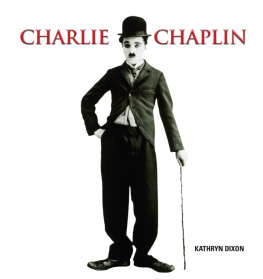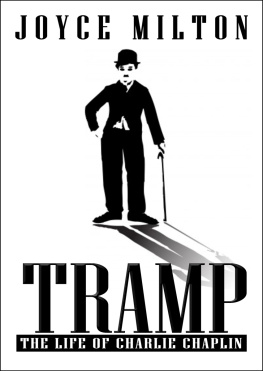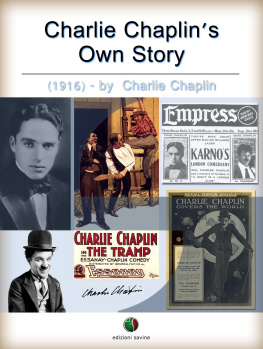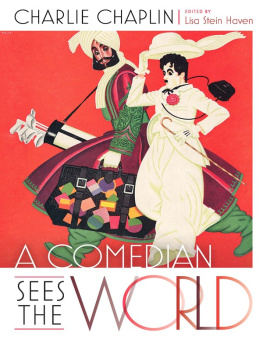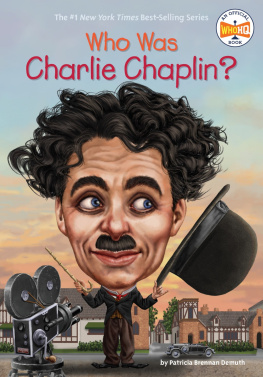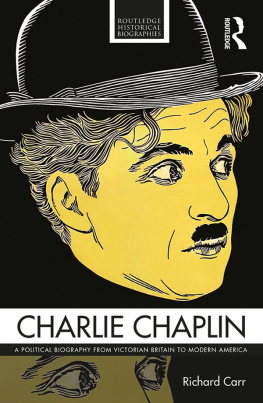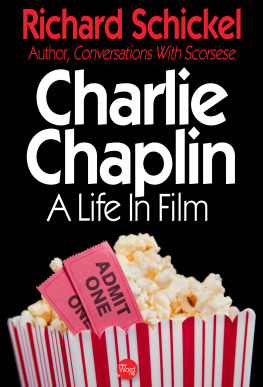All rights reserved. No part of this publication may be reproduced, stored in a retrieval
system, or transmitted in any form or by any means, electronic, mechanical, photocopying,
recording, or otherwise, without the prior written permission of the Publisher
and copyright holders.
All notations of errors or omissions (author inquiries, permissions) concerning the
content of this book should be addressed to .
The Publisher thanks www.charliechaplin.com, Roy Export SAS, and giromondo 1.
CHARLIE CHAPLIN
C harlie Chaplin literally fell into the genre of slapstick comedy when he was 18 years old. Long out of work and anxious to secure a part in an upcoming third-rate London production of Caseys Circus, entering the audition Chaplin slipped, tried to right himself, slipped again, fell on all fours over a chair which then fell on him, finally sitting upright on the floor with the chair on top of him. Chaplins completely unintentional routine was greeted with howls of laughter by the director who immediately gave Chaplin the part.
Yet harboring the ambition to be a famous dramatic actor, Chaplin secretly devised his own routine in Caseys Circus, appearing on stage with top hat and cane, inspired by a Covent Garden street-corner vendor of medicinal tinctures. His carefully prepared dramatization quickly devolved into comedy as he, once again, accidentally floundered with his props in the glare of the footlights. The crowd loved his act. Chaplin had found his calling.
Born to entertain, from an early age Chaplin had been pulled out of bed in the middle of the night to stand on the dining table and perform for guests at his parents raucous parties. He was a natural mimic, rewarded by the cheers and applause of the partying crowd. Years of imitating the movements and expressions of others had honed the skills Chaplin needed to amuse and captivate audiences in both bawdy London and in the entertainment-starved provinces of England. For Chaplin, his art imitated the life he observed around him.
Chaplins childhood was quite tough. The son of an alcoholic father and a sickly mother, Chaplin was forced on stage at the age of five to replace his mother, a vaudeville songstress, who at the last moment was unable to perform. Chaplin was frightened at first, but grew increasingly emboldened as his simple song was greeted with a hearty response and with tossed coins which soon filled his pockets. The coins, to his and his mothers chagrin, were garnered by his father to be spent at the local pub, even though the family would have benefited immensely from the extra money to buy much needed food and clothing.
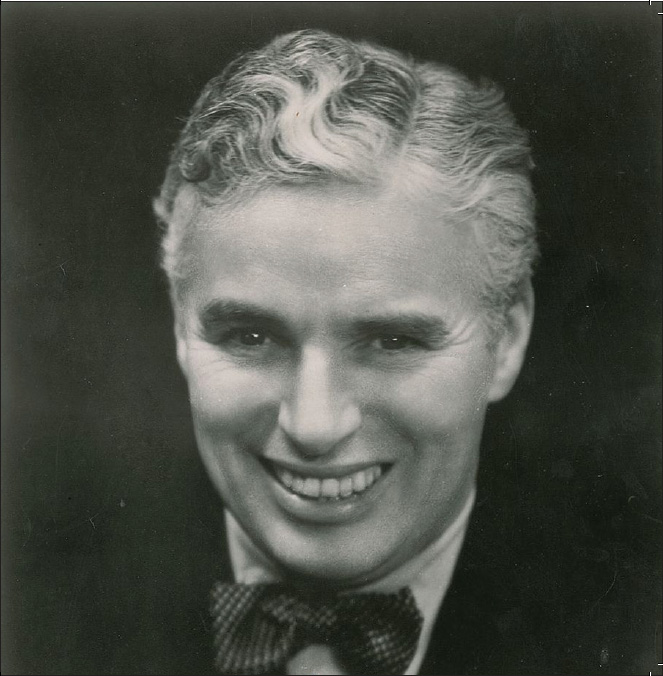
It would be another five years before Chaplin made it to the stage againthis time as a clog dancer. Watching him from the wings was a rather despicable man named Mr. Hawkins who swooped upon Chaplin as he left the stage, offering him a part with a clogging troop. Chaplins mother, busy on stage, was not at Chaplins side to stop him from accepting the mans offer. Chaplin ran away with him that night, only to find himself in very serious circumstances. He eventually escaped Mr. Hawkins physical and psychological abuse, but was forced to fend for himself alone on the streets of London for several years thereafter. It was a miserable existence.
C haplins tenacity and talent combined to make him not only a survivor but an achiever. Chaplin is one of the most well-known and well-loved actors of all time even though the majority of his work was in silent films, popular over 80 years ago. Chaplin left England for America at the age of 22 destined to make it big in a brand new medium called moving pictures. Commencing work at Keystone Studios in late 1913, he quickly adapted to the task of working during the day when the light was availableartificial light was not used at that timerather than at night as had been his custom in London when the music halls and theaters were open to the public. He learned to welcome the cameras presence, even with its constant clicking, and to be efficient in running scenes so as not to squander precious film or precious sunlight. Within weeks his on-screen visage was omnipresent in Hollywood, yet no one recognized him out of character as he strolled the streets in awe of his immediate and overwhelming popularity.
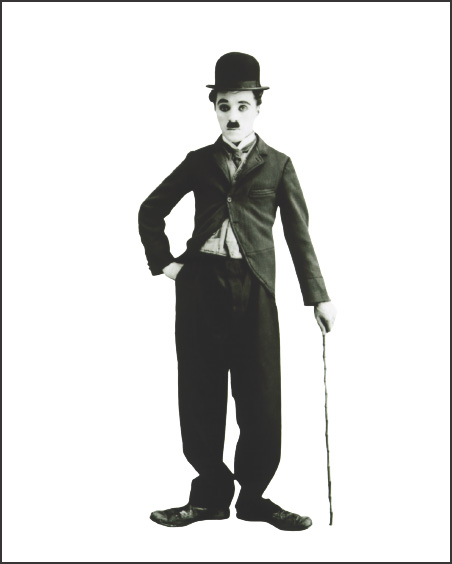
Chaplin in costume as The Tramp
In his early twenties, Chaplin was making $1,000 a day and a percentage of his films gross revenues. Thats $1,000 a day in 1920s dollars! By the age of 24, the funniest man in America had negotiated a contract with the help of his older brother, Sidneythat paid him a half-million dollars a year in salary and close to another half-million a year in royalties. In addition, he finagled a signing bonus of $150,000. The bonus was to be secured by a life insurance policy on Chaplin. That plan was jeopardized, however, when the insurance company deemed him uninsurable because of his occupation. Who knew that comedy could be life threatening?
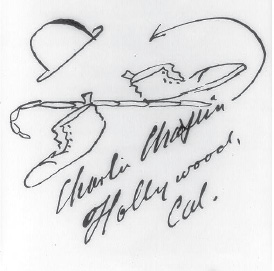
EARLY LIFE AND FAMILY
C harles Spencer Chaplin was born on April 16, 1889, in London, England, to Hannah Hill Chaplin and Charles Chaplin Sr. No official record of his birth exists. He was preceded four years earlier by his brother, Sidney, whose birth was duly recorded although no father was named. When Sidney was born his mother was unwed, but 14 weeks later married Charlie Chaplin Sr.
After their marriage, both Hannah and her husband pursued careers in the thriving music halls of London, which had evolved from the saloon-style bars of public houses that provided entertainment for customers. Hannah adopted the stage name, Lily (sometimes Lillie) Harley. Reputedly, both had more than a modicum of talent, but competition was fierce and pay was low. The family struggled, moving frequently in search of work and in an attempt to evade the latest rent collector.
Chaplin Sr. enjoyed more success than his wife, although he did not rise to the heights of many of his contemporariesone of whom was Charles Godfrey and to whom Chaplin Sr. was often compared in looks and style. Nevertheless, Chaplin Sr. graced the cover of several of his song successes published between 1890 and 1896the height of his career.
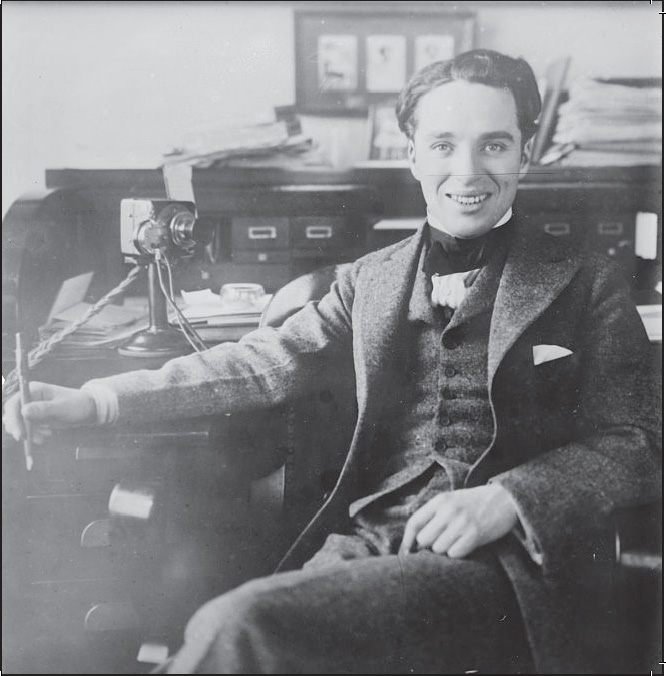
In 1892, another sibling appeared on the scene, the son of Hannah and Leo Dryden, whose stage name was George Dryden Wheeler, and also the name of the new child. In 1890, Chaplin Sr. had sailed from England for a vaudeville tour around America, leaving Hannah to begin a short-lived relationship with Leo Dryden. Not only was her relationship with Dryden of minimal duration, but her time with her new son was aborted when Dryden snatched the six-month-old boy and disappeared. George would not re-emerge until nearly 30 years later. By the time of Chaplin Sr.s return from America, his and Hannahs marriage was essentially over.

